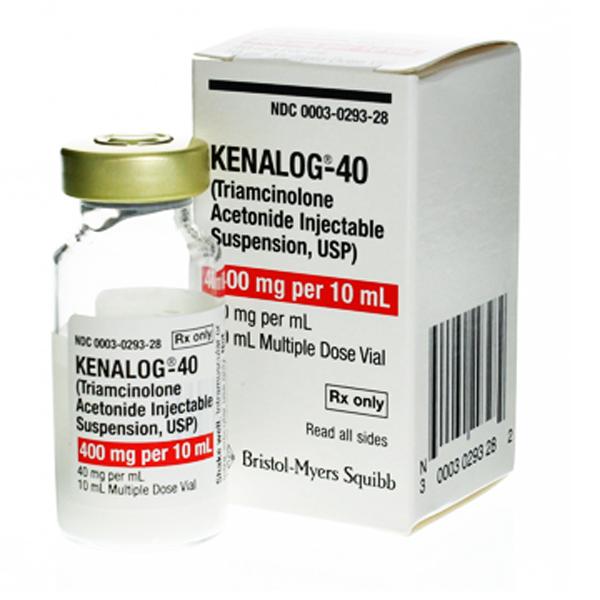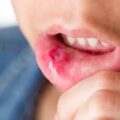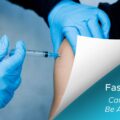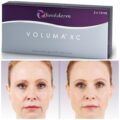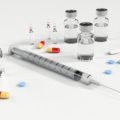What is Kenalog-40 Injection?
Kenalog-40 is a steroid that prevents the release of substances in the body that cause inflammation. Kenalog-40 is used to treat many different types of inflammatory conditions, including severe allergic reactions, skin disorders, severe colitis, inflammation of the joints or tendons, blood cell disorders, inflammatory eye disorders, lung disorders, and problems caused by low adrenal gland hormones. Kenalog-40 is also used to treat certain skin disorders caused by autoimmune conditions such as lupus, psoriasis, lichen planus, and others. Different brands of triamcinolone injection have different uses. Kenalog-40 may also be used for purposes not listed in this medication guide.
How is Kenalog-40 given?
Kenalog-40 is given through a needle and can be injected into different areas of the body: into a muscle, into the space around a joint or tendon, or into a lesion on the skin. A healthcare provider will give you this injection. Not every brand of Kenalog-40 is used for the same conditions or injected into the same body areas. Some brands are given only one time as needed. Others may be given at regular intervals. Carefully follow your doctor’s dosing instructions. For Keloids, once the area is anesthetized, the corticosteroid should be injected directly into the middle of the keloid until the keloid blanches.
Kenalog-40 can weaken (suppress) your immune system, and you may get an infection more easily. Call your doctor if you have unusual bruising or bleeding, or signs of infection (fever, weakness, cold or flu symptoms, skin sores, diarrhea, frequent or recurring illness).
Long-term use of steroids can cause harmful effects on the eyes. If you receive Kenalog-40 for longer than 6 weeks, your doctor may want you to have regular eye exams.
Your doctor may instruct you to limit your salt intake while you are receiving Kenalog-40. You may also need to take potassium supplements. Follow all instructions. This medicine can affect the results of certain medical tests. Tell any doctor who treats you that you are using Kenalog-40.
You should not stop using Kenalog-40 suddenly after long-term repeated use, or you could have unpleasant withdrawal symptoms. Ask your doctor how to safely stop using this medicine.
What happens if I miss a dose?
Call your doctor for instructions if you miss an appointment for a scheduled Kenalog-40. When Kenalog-40 is used as a single dose, you will not be on a regular dosing schedule.
What happens if I overdose?
Since Kenalog-40 is given by a healthcare professional in a medical setting, an overdose is unlikely to occur. Using too much Kenalog-40 is not likely to cause serious problems. However, long term use of high doses can lead to thinning skin, easy bruising, changes in body fat (especially in your face, neck, back, and waist), increased acne or facial hair, menstrual problems, impotence, or loss of interest in sex.
What should I avoid while receiving Kenalog-40?
After injection of triamcinolone into a joint, avoid overusing that joint through strenuous activity or high-impact sports. You could cause damage to the joint. Avoid being near people who are sick or have infections. Call your doctor for preventive treatment if you are exposed to chickenpox or measles. These conditions can be serious or even fatal in people who are using Kenalog-40.
Do not receive a “live” vaccine or a toxoid vaccine while using Kenalog-40, or you could develop a serious infection. Live vaccines include measles, mumps, rubella (MMR), polio, rotavirus, typhoid, yellow fever, varicella (chickenpox), zoster (shingles), and nasal flu (influenza) vaccine. Toxoid vaccines include diphtheria-tetanus toxoid (DT or Td).
How long does it take for a Kenalog shot to take effect?
Kenalog-40 Injection is a long-acting preparation, and is not suitable for use in acute stress situations. Kenalog-40 Injection has an extended duration of effect which may be sustained over a period of several weeks. Studies indicate that following a single intramuscular dose of 60 mg to 100 mg of triamcinolone acetonide, adrenal suppression occurs within 24 to 48 hours and then gradually returns to normal, usually in 30 to 40 days. This finding correlates closely with the extended duration of therapeutic action achieved with the drug. In general, anecdotal evidence indicates that it usually takes 1 week or so to take full effect, but it can provide almost complete relief from symptoms for 2-3 months.
Side Effects of Kenalog Shot
Redness or pain at the injection site, stomach upset, headache, dizziness, trouble sleeping, or weight gain may occur. If any of these effects last or get worse, tell your doctor or pharmacist promptly.
Remember that your doctor has prescribed this medication because he or she has judged that the benefit to you is greater than the risk of side effects. Many people using this medication do not have serious side effects.
This medication may raise your blood pressure. Check your blood pressure regularly and tell your doctor if the results are high.
This medication may make your blood sugar rise, which can cause or worsen diabetes. Tell your doctor right away if you have symptoms of high blood sugar such as increased thirst/urination. If you already have diabetes, check your blood sugar regularly as directed and share the results with your doctor. Your doctor may need to adjust your diabetes medication, exercise program, or diet.
This medication may lower your ability to fight infections. This may make you more likely to get a serious (rarely fatal) infection or make any infection you have worse. Tell your doctor right away if you have any signs of infection (such as sore throat that doesn’t go away, fever, chills, cough).
Tell your doctor right away if you have any serious side effects, including: weakness, puffy face, unusual weight gain, thinning skin, bone pain, menstrual period changes, mental/mood changes (such as depression, mood swings, agitation), easy bruising/bleeding, vision problems, swelling ankles/feet/hands, fast/slow/irregular heartbeat.
If you have received injection of this medication into the joint, temporary discomfort of the joint may occur. Tell your doctor right away if you have fever, increased/severe pain with swelling of the joint, weakness in the joint, or decreased range of motion in the joint.
Get medical help right away if you have any very serious side effects, including: symptoms of stomach/intestinal bleeding (such as stomach/abdominal pain, black/tarry stools, vomit that looks like coffee grounds).
A very serious allergic reaction to this drug is rare. However, get medical help right away if you notice any symptoms of a serious allergic reaction, including: rash, itching/swelling (especially of the face/tongue/throat), severe dizziness, trouble breathing.
This is not a complete list of possible side effects. If you notice other effects not listed above, contact your doctor or pharmacist. SEE: How To Use Kenalog Cream For Mouth Ulcers

